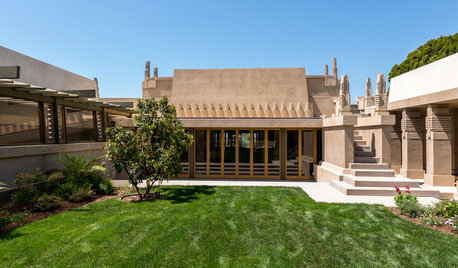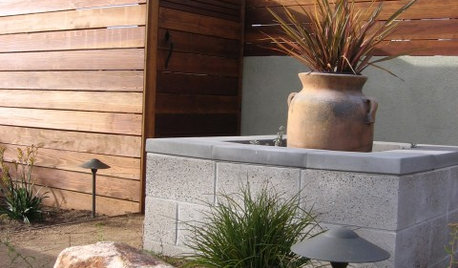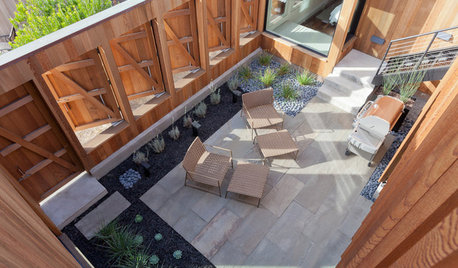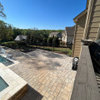Narrow Retaining Wall / Barrier - Input Sought (Video)
uvascanyon
13 years ago
Related Stories

MOST POPULARExclusive Video of Wright’s Jaw-Dropping Hollyhock House
Immerse yourself in the stunningly restored Frank Lloyd Wright masterpiece
Full Story
MOST POPULARYour Guide to 15 Popular Kitchen Countertop Materials
Get details and costs on top counter materials to help you narrow down the choices for your kitchen
Full Story
GARDENING GUIDESInvite Cellophane Bees to Your Garden by Providing Patches of Bare Soil
Look for cellophane bees (Colletes) pollinating flowering trees and shrubs in U.S. gardens this spring
Full Story
HOUSEPLANTSPlay Up Some Fiddleleaf Figs for a Lively Indoor Tune
Strike a dramatic chord in a minimalist scene or a country note in a rustic setting — fiddleleaf fig plants harmonize with any style
Full Story
COMMUNITYTogetherness Take 2: Is a Cohousing Community for You?
Missing that sense of connection? Consider the new breed of neighborhood with a communal bent
Full Story
KITCHEN DESIGNTrending Now: 25 Kitchen Photos Houzzers Can’t Get Enough Of
Use the kitchens that have been added to the most ideabooks in the last few months to inspire your dream project
Full Story
FENCES AND GATESModern Fencing for a More Secure Home
Deter would-be burglars without robbing your home of style, by installing a modern fence like one of these
Full Story
ARCHITECTUREDesign Workshop: 9 Ways to Open a House to the Outdoors
Explore some of the best ideas in indoor-outdoor living — and how to make the transitions work for both home and landscape
Full Story
HOME OFFICESRoom of the Day: Easing Into a Home Office Update
A decorator revamps her husband’s workspace with favorite objects and furnishings he grows to love
Full Story
DOORS5 Questions to Ask Before Installing a Barn Door
Find out whether that barn door you love is the right solution for your space
Full StoryMore Discussions









rosiew
uvascanyonOriginal Author
Related Professionals
Forest Acres Landscape Architects & Landscape Designers · Woodinville Landscape Architects & Landscape Designers · Tempe Landscape Contractors · Hickory Hills Landscape Contractors · Louisville Landscape Contractors · New Providence Landscape Contractors · Norwalk Landscape Contractors · Palos Verdes Estates Landscape Contractors · Peoria Landscape Contractors · St. Louis Landscape Contractors · Maple Heights Landscape Contractors · Chandler Decks, Patios & Outdoor Enclosures · Salt Lake City Decks, Patios & Outdoor Enclosures · Woodstock Decks, Patios & Outdoor Enclosures · Englewood Swimming Pool Builderspls8xx
uvascanyonOriginal Author
pls8xx
uvascanyonOriginal Author
pls8xx
rosiew
uvascanyonOriginal Author
pls8xx
botann
azbookworm
in ny zone5